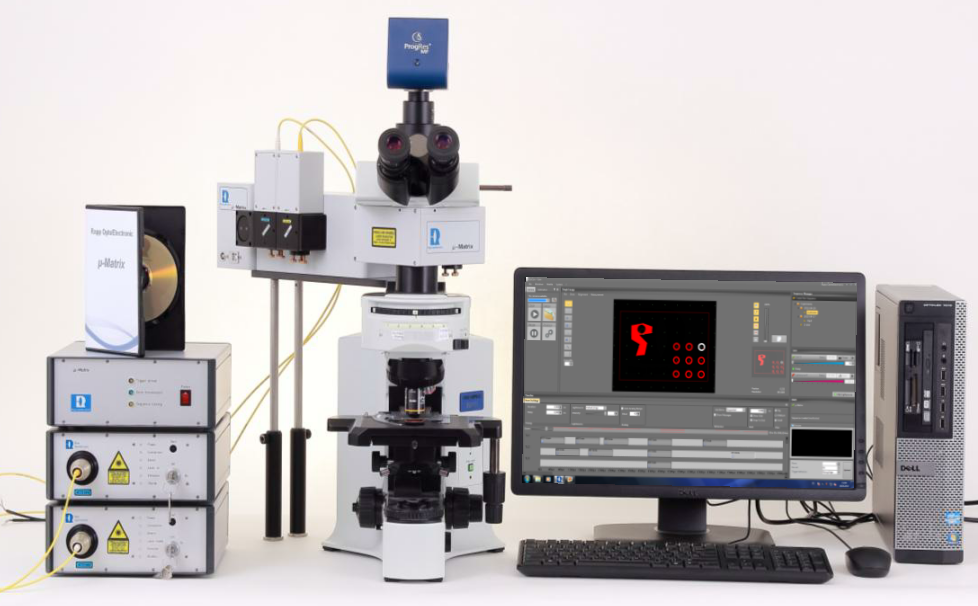
Pattern Illumination Device
The µ-MATRIX is a computer controlled illumination device which uses a DLP chip to create different patterns or projects
images onto the sample in the field of view of the microscope.
In combination with wide field, spinning disk confocal or laser scanning microscopy methods, the µ-MATRIX is a powerful tool
in the study of fast biological response signals. While performing similar functions as its scanner based sister devices,
the µ-MATRIX enables the light induced events to occur simultaneously at multiple locations, eliminating the delay introduced
by the scanning process.
The µ-MATRIX system consists of the optical module, the coupling to the microscope, the controller and the software. The
optical module is coupled to the microscope without interfering with other existing devices (i.e. spinning disk, LSM, etc.).
Features:
- Up to 3 fiber coupled light sources – solid state lasers and/or Lumencor Spectra Light Engines ®
- Standard picture formats
- Vibration free, no moving parts
- TTL IN/OUT lines for synchronization
- Available for several microscope models
Illumination
|
|

